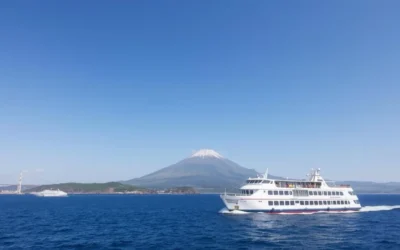Welcome to Yamagata City, a hidden gem in northern Japan that offers a unique blend of natural beauty and cultural richness. Located in the Tohoku region, this city is an excellent base for exploring surrounding mountains, historic sites, and seasonal wonders.
As you plan your trip, you’ll find that Yamagata City is a cosmopolitan hub worth visiting, with its rich culture, soothing hot springs, and stunning landscapes. This comprehensive guide highlights the top attractions and activities to make your travel experience unforgettable.
Whether you’re planning a weekend getaway or a longer adventure, you’ll discover the top things to do in this captivating city for an authentic Japanese experience.
Discovering Yamagata City: Japan’s Northern Gem
As the capital of Yamagata Prefecture, Yamagata City is an ideal base for exploring the natural wonders and cultural heritage of the Tohoku region. With a population of approximately 250,000 people, Yamagata City balances urban convenience with the charm of a smaller Japanese city.
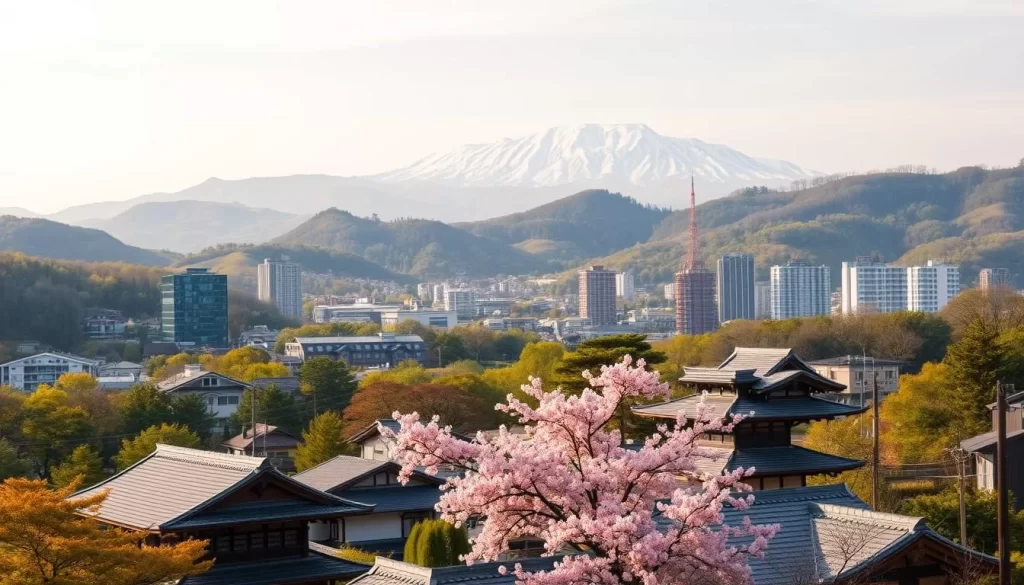
Location and Geography
Yamagata City is nestled in the heart of Yamagata Prefecture in the Tohoku region of northern Japan, surrounded by majestic mountains and lush valleys. The city’s strategic location makes it an ideal gateway to explore the natural wonders of the area, including Mount Zao and the picturesque countryside.
Brief History and Cultural Significance
The region has a rich historical background dating back centuries, with influences from samurai culture and mountain worship traditions that continue to shape local customs today. Yamagata’s cultural significance is evident in its well-preserved historical buildings, traditional festivals, and distinctive local cuisine that reflects the area’s agricultural heritage, providing valuable information about the region’s history and culture.
You can experience the unique blend of traditional and modern culture in Yamagata City, making it a fascinating destination for visitors.
How to Get to Yamagata City
With its well-connected transportation network, Yamagata City is simple to reach from major Japanese cities like Tokyo. Whether you prefer the convenience of a bullet train or the flexibility of flying and then taking a bus, there are multiple options to suit your travel needs.
From Tokyo via Yamagata Shinkansen
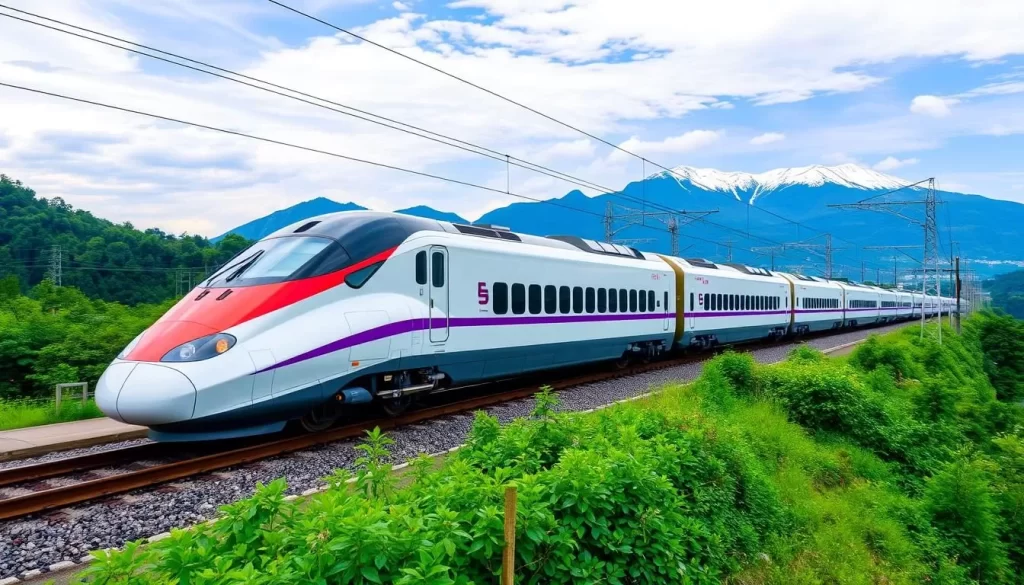
The most convenient way to reach Yamagata City is via the Yamagata Shinkansen, a bullet train that connects Tokyo to Yamagata in approximately 2.5 hours without any transfers. The Yamagata Shinkansen is part of Japan’s efficient rail network, offering comfortable seating and scenic views as you travel through the Japanese countryside.
To plan your trip, you can check the Yamagata Shinkansen schedule in advance to ensure a smooth journey.
Other Transportation Options
For those who prefer air travel, you can fly from Tokyo to Sendai Airport, which takes about an hour, and then take a direct bus to Yamagata City, adding another 1.5 hours to your journey. Alternatively, flying to Yamagata Airport is another option, with bus services available to the city center in about 30 minutes.
When planning your travel to Yamagata, consider the JR EAST PASS (Tohoku area) if you’re exploring multiple destinations in the region. It offers unlimited travel on JR trains, including the Shinkansen, for 5 consecutive days, providing valuable information to help you make the most of your trip.
Best Time to Visit Yamagata City
Yamagata City is a destination that transforms dramatically throughout the year, offering unique experiences in every season. Whether you’re interested in winter sports, spring cherry blossoms, summer festivals, or autumn foliage, Yamagata City has something to offer.
Seasonal Highlights
Each season in Yamagata City brings its own unique highlights. Winter, from December to February, is perfect for skiing, snowboarding, and viewing the famous “snow monsters” at Zao Onsen. The heavy snowfall creates a magical landscape. In the spring, from March to May, cherry blossoms bloom across the city, making it an excellent time for temple visits and outdoor exploration. Summer offers warm weather ideal for hiking and participating in local festivals. Autumn, from September to November, paints the mountains with spectacular foliage, creating breathtaking views at spots like Yamadera Temple.
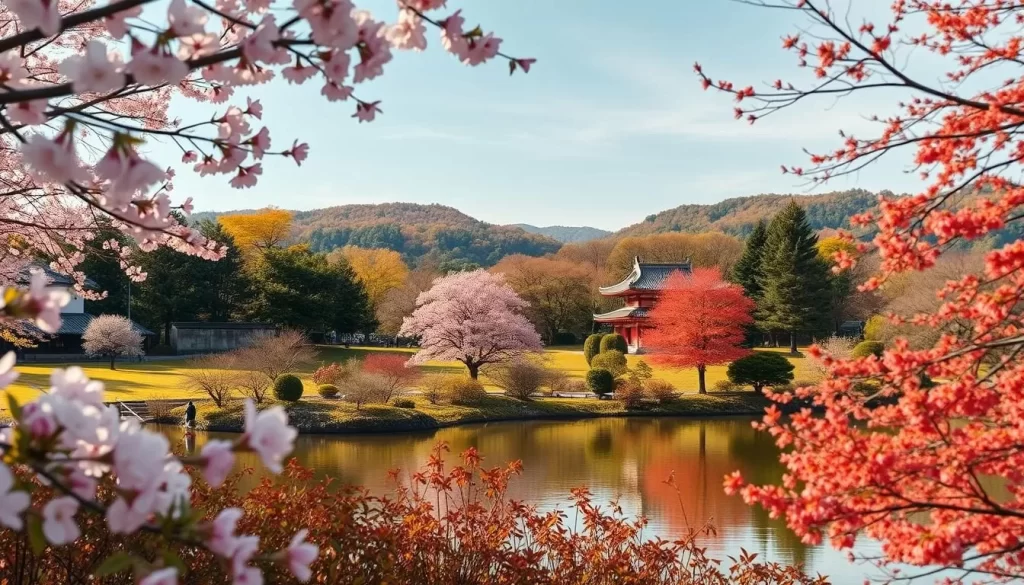
Weather Considerations and What to Pack
When planning your visit to Yamagata City, it’s essential to consider the weather. The city experiences extreme seasonal variations. In winter, be prepared for heavy snow and cold temperatures, requiring serious cold-weather gear, including waterproof boots and layers. In contrast, summer calls for light clothing and sun protection. Throughout the year, the weather can be quite different, so it’s crucial to pack accordingly to make the most of your visit.
Exploring Yamadera Temple
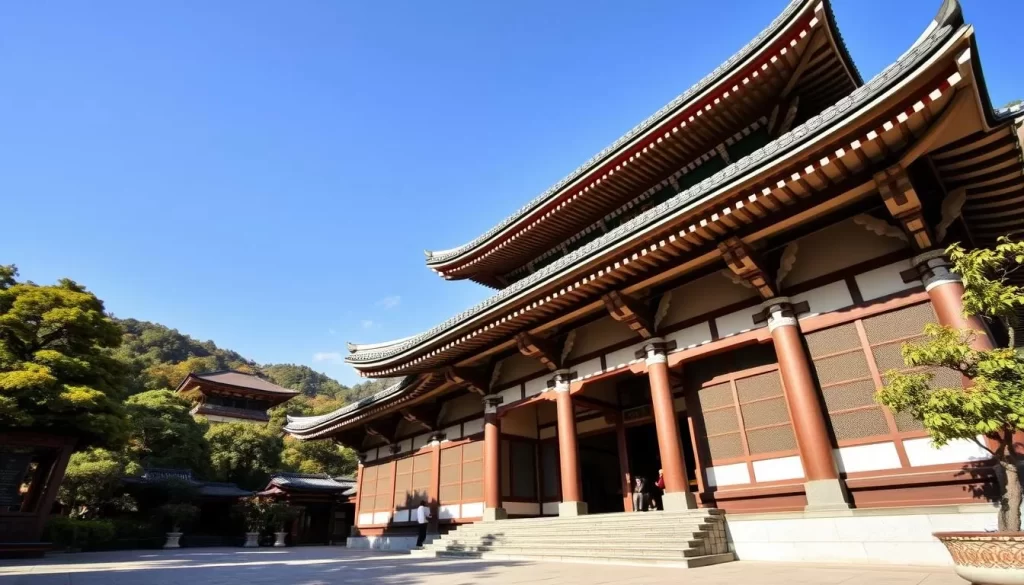
Just 25 minutes from Yamagata City, the historic Yamadera Temple beckons. Founded in the 9th century, this ancient temple complex is perched dramatically on a mountainside. Yamadera Temple, officially known as Risshakuji, is one of the most iconic attractions near Yamagata City.
The 1,000-Step Climb to Spiritual Enlightenment
The journey to Yamadera Temple is as significant as the destination. Visitors must climb approximately 1,000 stone steps through a mystical cedar forest to reach the main buildings. This challenging ascent is both a physical adventure and a spiritual journey, with small shrines, stone lanterns, and Buddhist statues dotting the path upward.
Best Photo Spots and Viewing Points
Upon reaching the top, you’ll be rewarded with breathtaking panoramic views of the surrounding mountains and valleys. The temple’s Kaisando Hall and Nokyodo (sutra repository) cling to the cliff edge, creating perfect photo opportunities that capture the harmony between human architecture and nature. Yamadera Temple is particularly stunning during autumn when the surrounding forest erupts in vibrant red, orange, and gold foliage.
Relaxing at Zao Onsen
Nestled in the mountains near Yamagata City, Zao Onsen is a haven for those seeking relaxation and adventure.
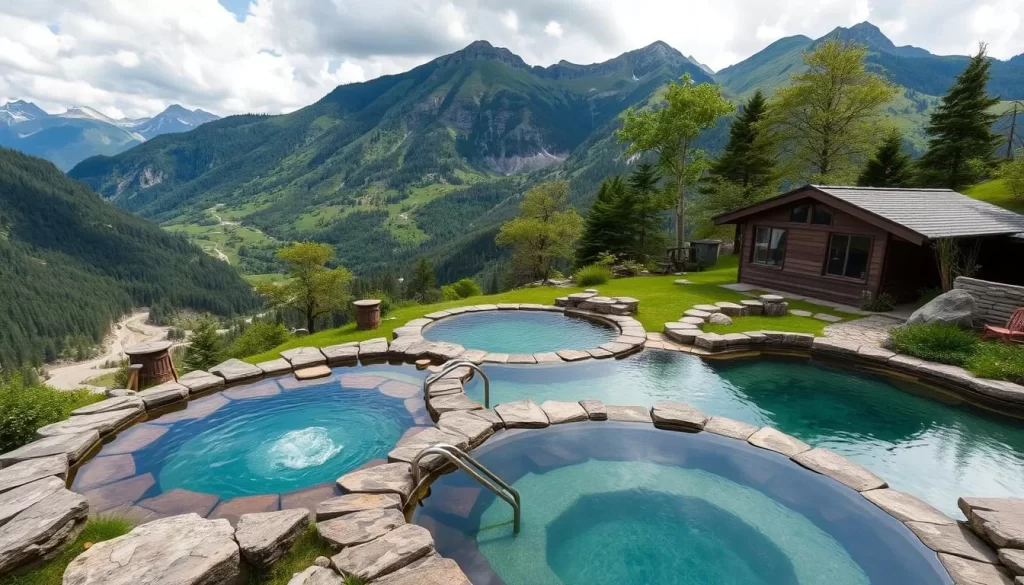
Healing Properties of the Sulfur Hot Springs
The hot springs at Zao Onsen are renowned for their highly acidic, sulfur-rich waters, which are considered among the most therapeutic in Japan. These waters are particularly beneficial for skin conditions and muscle pain.
You can experience the healing properties of Zao Onsen’s hot springs at various public baths or traditional ryokan inns in the area, with options for both indoor and outdoor bathing.
The sulfur-rich waters are milky white and offer a unique onsen experience.
Zao Onsen Ski Resort and Activities
Beyond its famous hot springs, Zao Onsen is home to one of Japan’s premier ski resorts, featuring 14 slopes and 12 courses suitable for all skill levels.
The Zao Onsen Ski Resort is particularly popular for its “snow monsters” phenomenon, as well as its excellent powder snow conditions and stunning mountain views.
During the summer, the area transforms into a hiking paradise with trails leading to the volcanic crater lake and lush alpine meadows.
Witnessing the Famous Zao Snow Monsters
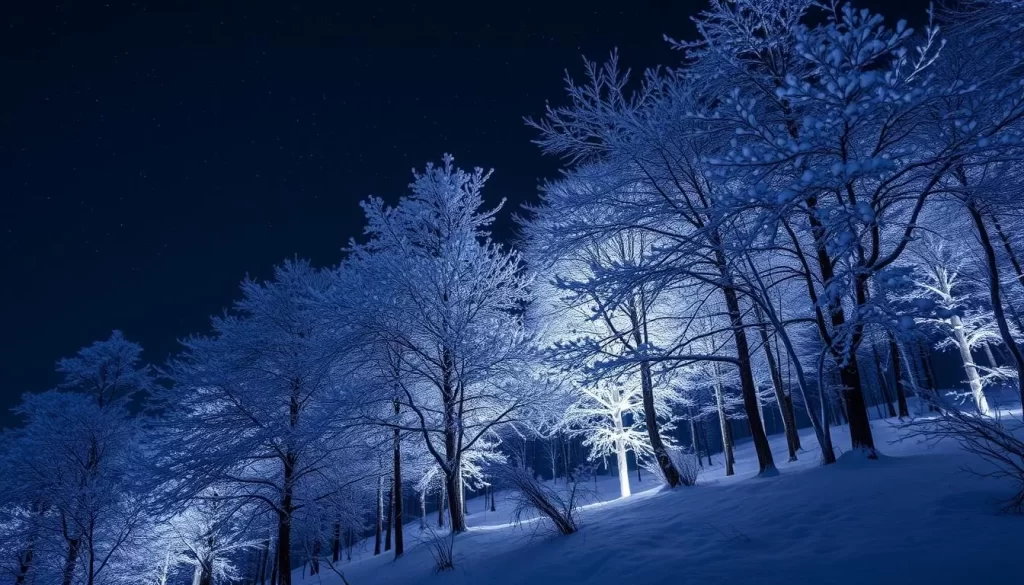
Experience the enchanting world of Zao’s snow monsters, a winter wonder that’s sure to captivate your senses. The Zao snow monsters, locally known as “juhyo,” are one of Japan’s most unique winter phenomena, drawing visitors from around the world to witness this surreal natural spectacle.
What Causes This Natural Phenomenon
The formation of snow monsters occurs when Siberian winds blast the Aomori fir trees on the upper slopes of Mount Zao, coating them with heavy snow and ice that creates bizarre, otherworldly shapes resembling creatures frozen in time. The scientific process involves supercooled water droplets in the air freezing instantly upon contact with the trees, gradually building up layers of ice and snow that completely transform their appearance.
Best Viewing Times and Locations
The best time to view the snow monsters is from mid-January through mid-February when they reach their peak formation and appear most dramatic against the winter landscape. For the most magical experience, visit during the evening illumination period when colorful lights shine on the snow monsters, creating an enchanted forest atmosphere that’s perfect for photography. You can access the snow monsters area via the Zao Ropeway and gondola, which takes you directly to viewing platforms where you can observe these natural ice sculptures up close or from the warmth of mountain cafés.
Visiting the Enchanting Ginzan Onsen
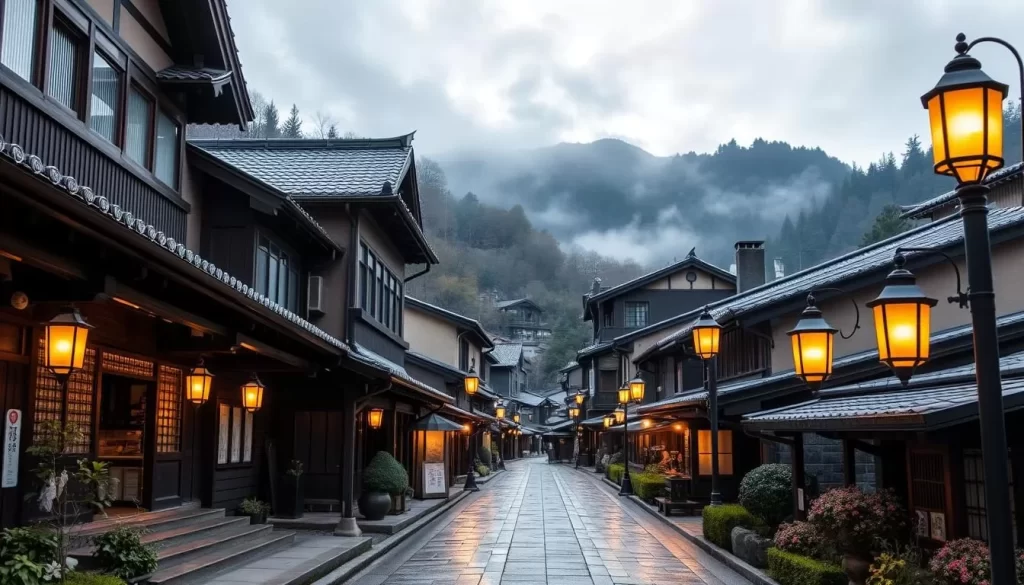
Discover the charm of Ginzan Onsen, a hot spring town that embodies the essence of traditional Japan. This enchanting destination is a must-visit when traveling to Yamagata, offering a unique blend of relaxation and cultural immersion.
Historic Architecture and Nostalgic Atmosphere
Ginzan Onsen is a picturesque hot spring town that looks like it’s been plucked straight from a Studio Ghibli film, with its nostalgic atmosphere and beautifully preserved traditional architecture. The town‘s charm reaches its peak in winter when snow blankets the rooftops and gas lamps illuminate the streets, creating a magical ambiance that transports visitors back to Japan’s Taisho era (1912-1926).
Public Baths and Ryokan Experiences
Rows of wooden ryokan (traditional inns) line the Ginzan River, their classic architecture creating a harmonious townscape that has made this area one of Yamagata’s most photographed destinations. For the full Ginzan Onsen experience, stay overnight at one of the historic ryokan where you can enjoy private or in-room hot spring baths, traditional multi-course kaiseki meals, and sleeping on futons laid out on tatami floors. If you’re just visiting for the day, several public bathhouses offer affordable entry to experience the healing mineral waters that have drawn travelers to this serene Ginzan Onsen for generations.
As you explore Ginzan Onsen, take a leisurely stroll along the compact town’s streets, visiting small shops selling local crafts and specialties like the famous “curry bread” that’s become a must-try treat for visitors to the Ginzan Onsen area.
Yamagata City, Japan: Best Things to Do – Top Picks
Visitors to Yamagata City can discover a wealth of cultural and historical attractions that showcase the city’s unique character. As the capital of Yamagata Prefecture, Yamagata City is an ideal base for exploring the surrounding area.
Kajo Park and Yamagata Castle Ruins
Kajo Park, located just a short walk from Yamagata Station, is a must-visit attraction. The park contains the ruins of Yamagata Castle and transforms throughout the seasons. In the spring, it’s a pink paradise during cherry blossom season, while later in the year, it displays vibrant autumn colors.
The park hosts several events throughout the year, making it a great place to experience the local culture. You can stroll through the park and explore the castle ruins, taking in the history and beauty of the area.
| Season | Attractions | Events |
|---|---|---|
| Spring | Cherry Blossoms | Hanami (Cherry Blossom Viewing) |
| Autumn | Autumn Leaves | Fall Foliage Events |
Bunshokan Museum and Historic Buildings
The Yamagata Folk Museum Bunshokan is one of the city’s architectural treasures. Housed in a grand Western-style building from 1916, it once served as the prefectural government office and now displays local historical artifacts.
![]()
Visitors to Yamagata City should also explore the Old Saiseikan Hospital Building, another well-preserved historical structure that offers insight into the city’s development during the Meiji period. The city center features a blend of modern shopping areas and traditional districts where you can experience everyday life in Yamagata.
These city attractions can be easily explored on foot or using local transportation, making them perfect additions to your itinerary before venturing out to the more famous sites in the surrounding area.
Savoring Yamagata’s Culinary Delights
As a food lover’s paradise, Yamagata City offers an unforgettable gastronomic experience, with its unique local specialties and fresh produce. The region’s culinary identity is deeply rooted in its rich agricultural heritage and natural bounty.
Yonezawa Beef and Local Specialties
Yamagata Prefecture is renowned for its exceptional agricultural products and distinctive local cuisine that reflects the region’s natural bounty. The crown jewel of Yamagata’s culinary offerings is Yonezawa beef, considered one of Japan’s top three wagyu brands alongside Kobe and Matsusaka, known for its exceptional marbling and melt-in-your-mouth texture.
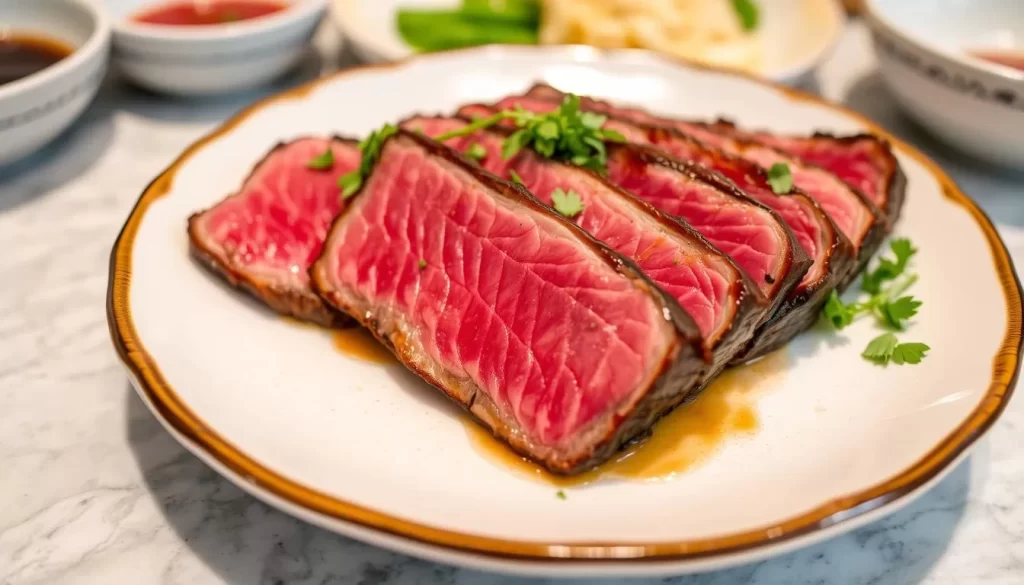
Other local specialties to try include imoni (a hearty taro and beef hotpot), dadacha-mame (a premium variety of edamame beans), and tama konnyaku (konjac jelly balls often served with a sweet miso sauce). Don’t miss the opportunity to pair your food with local sake, as Yamagata is home to numerous award-winning breweries.
Fruit Picking and Cherry Experiences
Cherries are Yamagata’s most famous fruit export, with the prefecture producing approximately 70% of Japan’s cherry crop. Local people take immense pride in growing dozens of varieties, from the popular Satonishiki to rare local cultivars.
During cherry season (mid-June to early July), you can experience fruit picking at local orchards or sample cherries-infused foods throughout the region, from traditional sweets to more creative culinary innovations.
Experiencing Yamagata’s Vibrant Festivals
If you’re looking for an immersive cultural experience, Yamagata’s festivals are a great way to dive into local traditions. The city’s festivals offer visitors a vibrant way to experience local traditions, with colorful celebrations taking place throughout the year that showcase the region’s cultural heritage.
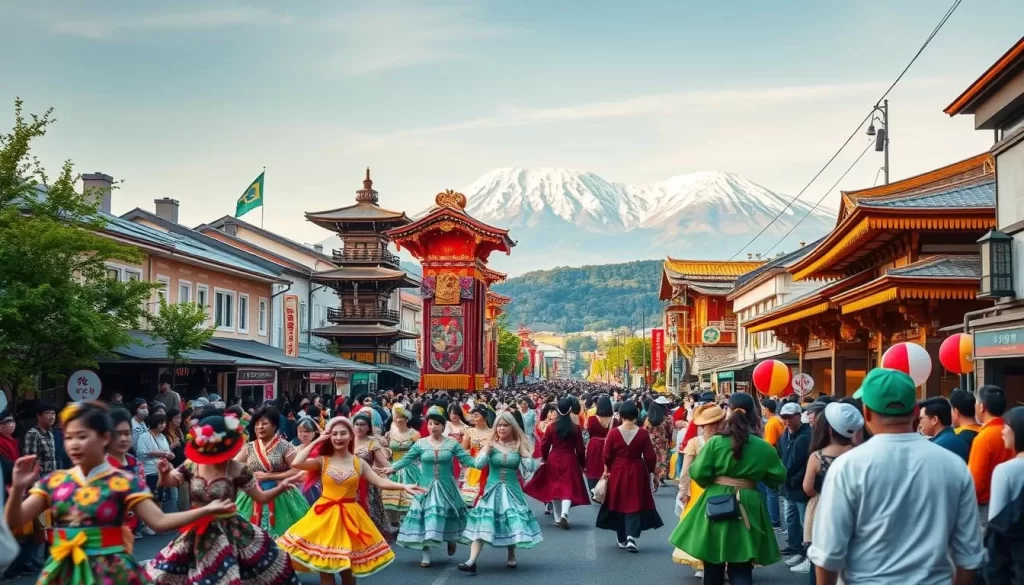
Yamagata Hanagasa Festival
The Yamagata Hanagasa Festival, held every August 5-7, is one of Tohoku’s most famous summer festivals. It features thousands of dancers wearing straw hats (hanagasa) who parade through the streets performing traditional dances. This event is a great way to experience the local culture and community spirit.
Cherry Festival and Imoni Festival
In mid-June, the Yamagata Cherry Festival celebrates the city’s famous fruit with various events, including cherry markets and cooking demonstrations. The autumn Imoni Festival is a unique community gathering where people come together to enjoy massive pots of imoni stew cooked outdoors along the riverbanks. These festivals aren’t just tourist attractions but living traditions that connect modern residents to their cultural roots, offering authentic insights into the way local people celebrate their heritage and community bonds.
Timing your visit to coincide with one of these festivals adds an extra dimension to your Yamagata experience, allowing you to participate in traditions that have been passed down through generations in a fun and engaging way.
Day Trips from Yamagata City
Discover the charm of Yamagata Prefecture with day trips from Yamagata City. The region offers a diverse range of experiences, from relaxing hot springs to historical landmarks and cultural attractions.
Exploring Tendo and Kaminoyama Onsen
Tendo is renowned for its vast orchards and production of shogi pieces, with 95% of Japan’s shogi pieces being crafted here. You can tour local workshops to witness artisans at work.
Kaminoyama Onsen, a historic hot spring town, offers four public baths where you can relax and rejuvenate. Afterwards, visit Kaminoyama Castle for panoramic views of the town and surrounding mountains.
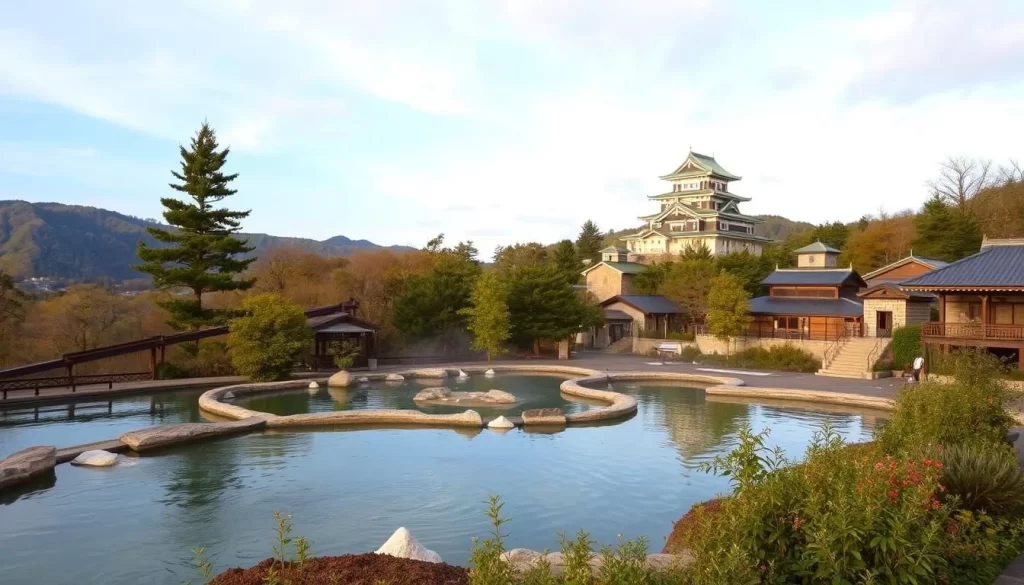
Visiting Sakata and Tsuruoka
A day trip to Sakata on the Sea of Japan coast rewards you with historical attractions like the Sankyo Soko rice storehouses and fresh seafood at the local fish market.
Tsuruoka, another coastal town, serves as a gateway to the sacred Dewa Sanzan mountains and features Tsuruoka Park, a beautiful green space popular during cherry blossom season.
Practical Travel Tips for Yamagata City
Planning a trip to Yamagata City requires some insider knowledge to make the most of your time in this beautiful Japanese region. To ensure a smooth and enjoyable journey, it’s crucial to understand the local transportation options and accommodation choices.
Getting Around the City and Region
Touring Yamagata by public transport is possible, but services in rural areas can be infrequent. Yamagata City is fairly walkable, with highlights like Kajo Park just a brief stroll from the station. Places like Yamadera can be accessed with ease by train. However, most trips across Yamagata will require the use of buses, such as those to Zao Onsen or Ginzan Onsen. For a smoother way to travel, consider renting a car, especially during winter when snow can affect public transportation schedules.
If you prefer public transportation, the JR EAST PASS (Tohoku area) offers good value for travelers planning multiple train journeys. Be aware that buses to popular destinations run on limited schedules, so plan your trip accordingly.
Accommodation Options and Recommendations
Accommodation options in Yamagata range from modern hotels near Yamagata Station to traditional ryokan in hot spring areas. Booking well in advance is essential, especially during peak travel times like cherry blossom season or winter ski season. For an authentic experience, spend at least one night at a ryokan in Zao Onsen or Ginzan Onsen, where you can enjoy traditional hospitality and kaiseki meals.
The best time to book your accommodation is 3-6 months in advance for peak seasons. Many properties in popular areas can be fully booked up to a year ahead for winter weekends, so plan your trip with sufficient time to secure your preferred accommodation.
Conclusion
Discovering Yamagata City is like uncovering a treasure trove of Japan’s lesser-known delights, from its stunning landscapes to its rich cultural traditions. Yamagata City and the surrounding prefecture offer a perfect blend of natural beauty, cultural experiences, and culinary delights that make it a rewarding destination for travelers seeking authentic Japan beyond the typical tourist routes.
Your time in Yamagata will be filled with unique experiences, from the spiritual journey up the 1,000 steps of Yamadera Temple to the otherworldly beauty of snow monsters at Zao Onsen. The changing seasons bring different charms to Yamagata Prefecture—winter’s snow-covered landscapes, spring’s cherry blossoms, summer’s vibrant festivals, and autumn’s spectacular foliage—making it worth considering a return trip during another time of year.
The warm hospitality of local people, combined with the region’s natural hot springs and delicious local cuisine, creates a restorative travel experience that balances adventure with relaxation. As you plan your trip to Japan, consider giving Yamagata City more than just a passing visit—this northern gem rewards those who take the time to explore its depths with memories that will last a lifetime.
The above is subject to change.
Check back often to TRAVEL.COM for the latest travel tips and deals.

